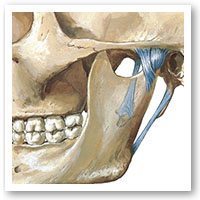TMJ and Chiropractic
 You may have heard or experienced a condition called TMJ which is a condition of clicking or pain in the Temperomandibular Joint (TMJ) or jaw. It is more correctly termed TMD which stands for Temperomandibualr Disorder (TMD). These occur as a result of problems with the jaw, jaw joint, and surrounding facial muscles that control chewing and moving the jaw.
You may have heard or experienced a condition called TMJ which is a condition of clicking or pain in the Temperomandibular Joint (TMJ) or jaw. It is more correctly termed TMD which stands for Temperomandibualr Disorder (TMD). These occur as a result of problems with the jaw, jaw joint, and surrounding facial muscles that control chewing and moving the jaw.
Causes include:
- Injury to the jaw, Temperomandibular joint, or muscles of the head and neck (such as from a heavy blow or whiplash)
- Grinding or clenching the teeth, putting great pressure through the TMJ
- Stress, which can lead to clenching

 Can Chiropractic help with a fracture (the medical term for any broken bone)? No, of course not! But Chiropractic can help if you’ve had a fracture, it has healed, but it still just doesn’t feel right.
Can Chiropractic help with a fracture (the medical term for any broken bone)? No, of course not! But Chiropractic can help if you’ve had a fracture, it has healed, but it still just doesn’t feel right. Signs/Symptoms
Signs/Symptoms